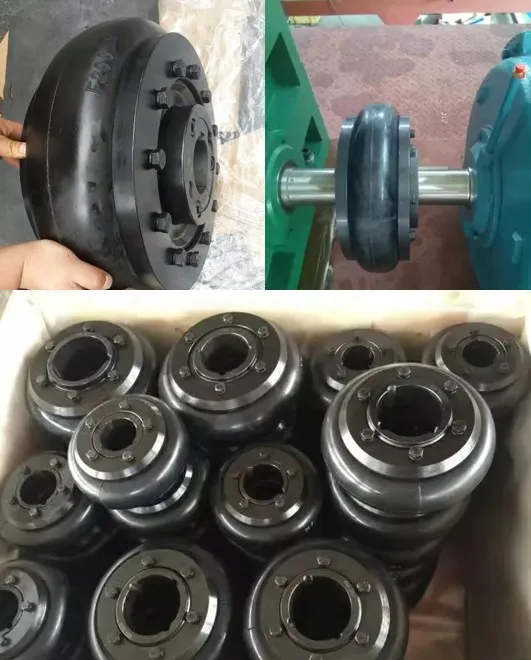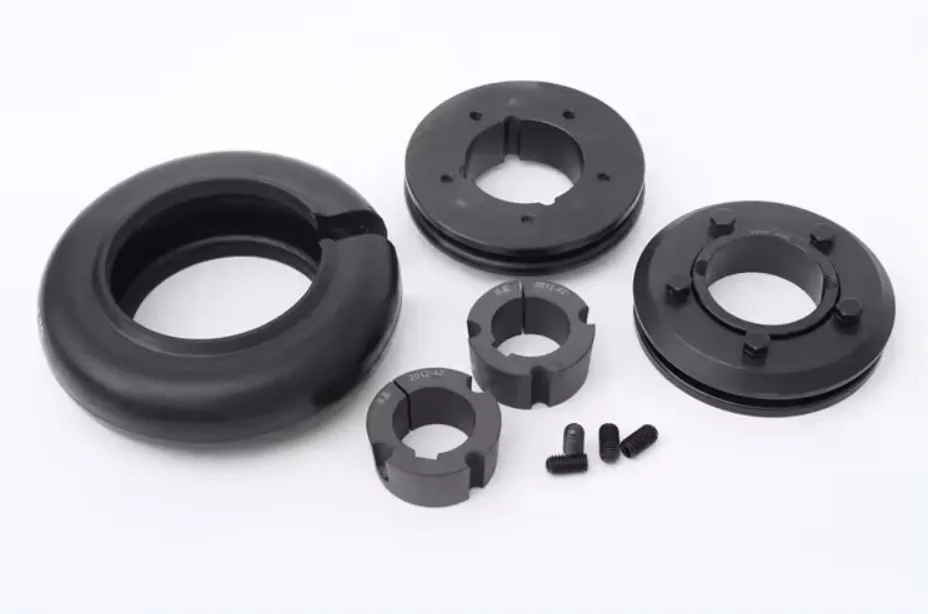Rubber Coupling for PVC Pipe

Introduction
Rubber coupling for PVC pipe is a vital component used in plumbing systems. It provides a flexible and secure connection between two PVC pipes, ensuring efficient flow of liquids or gases. This article will delve into the various aspects of rubber coupling for PVC pipe, including its installation, selection, and customization.
Advantages of Rubber Coupling
1. Flexibility: Rubber couplings offer excellent flexibility, allowing for easy installation and connection between PVC pipes of different sizes.
2. Leak-proof Seal: The rubber material used in these couplings forms a tight seal, minimizing the chances of leakage.
3. Shock Absorption: Rubber couplings are designed to absorb vibrations and shocks, reducing the risk of pipe damage and prolonging the system’s lifespan.
4. Chemical Resistance: The rubber material used in these couplings is highly resistant to various chemicals, ensuring longevity in different environments.
5. Easy Installation: Rubber couplings can be quickly and easily installed without the need for specialized tools or expertise.

How to Install Rubber Coupling
To install a rubber coupling, follow these steps:
1. Measure the pipe diameter: Use a measuring tape to determine the exact diameter of the PVC pipes that need to be connected.
2. Cut the PVC pipes: Using a saw or pipe cutter, cut the PVC pipes to the desired length, ensuring a clean and straight edge.
3. Lubricate the coupling: Apply a thin layer of lubricant on the inside of the rubber coupling to ease the insertion process.
4. Insert the pipes: Slide one end of the PVC pipe into one side of the rubber coupling, ensuring it is fully inserted. Repeat the process for the other pipe.
5. Secure the coupling: Tighten the stainless steel clamps or fasteners around the rubber coupling, ensuring a secure and leak-proof connection.

Choosing and Customizing Rubber Coupling
When selecting or customizing a rubber coupling, consider the following parameters and factors:
1. Pipe Diameter: Ensure that the rubber coupling matches the diameter of the PVC pipes for a proper fit.
2. Length and Width: Choose a coupling with the appropriate length and width to accommodate the pipe size and application.
3. Material Composition: Select a rubber coupling made from high-quality materials that offer excellent chemical resistance and durability.
4. Temperature Rating: Consider the temperature range in which the coupling will operate and choose one that can withstand those conditions.
5. Application-Specific Features: Depending on your specific needs, consider additional features such as UV resistance, fire resistance, or noise reduction properties.
HZPT, located in Hangzhou, Zhejiang Province, is a modern enterprise that specializes in research, development, production, and international trade. With a strong focus on integrity and innovation, we offer a wide range of rubber couplings for various applications.

Our company stands out in the market due to the following advantages:
1. Quality Assurance: We have a comprehensive and scientific quality management system, ensuring that our rubber couplings meet the highest standards.
2. Technological Expertise: With our dedicated R&D and testing departments, we continuously innovate and improve our rubber coupling products.
3. Certification: We hold certifications such as CQC, ISO, and CE, affirming our commitment to quality and compliance with international standards.
4. Excellent Sales and Support: We provide exceptional sales services and technical support to ensure customer satisfaction.
5. Extensive Market Reach: Our products are widely distributed in Asia, Europe, Africa, and North America, making us a globally recognized brand.
Partnering with us means choosing a reliable and trusted supplier for rubber couplings. Contact us today to discuss your requirements and experience the benefits of our high-quality products.
How to Install Rubber Coupling
To install a rubber coupling, follow these steps:
1. Measure the pipe diameter: Use a measuring tape to determine the exact diameter of the PVC pipes that need to be connected.
2. Cut the PVC pipes: Using a saw or pipe cutter, cut the PVC pipes to the desired length, ensuring a clean and straight edge.
3. Lubricate the coupling: Apply a thin layer of lubricant on the inside of the rubber coupling to ease the insertion process.
4. Insert the pipes: Slide one end of the PVC pipe into one side of the rubber coupling, ensuring it is fully inserted. Repeat the process for the other pipe.
5. Secure the coupling: Tighten the stainless steel clamps or fasteners around the rubber coupling, ensuring a secure and leak-proof connection.

Choosing or Customizing Rubber Coupling
When selecting or customizing a rubber coupling, consider the following parameters and factors:
1. Pipe Diameter: Ensure that the rubber coupling matches the diameter of the PVC pipes for a proper fit.
2. Length and Width: Choose a coupling with the appropriate length and width to accommodate the pipe size and application.
3. Material Composition: Select a rubber coupling made from high-quality materials that offer excellent chemical resistance and durability.
4. Temperature Rating: Consider the temperature range in which the coupling will operate and choose one that can withstand those conditions.
5. Application-Specific Features: Depending on your specific needs, consider additional features such as UV resistance, fire resistance, or noise reduction properties.
Contact HZPT today for professional assistance and high-quality rubber couplings that meet your requirements.
